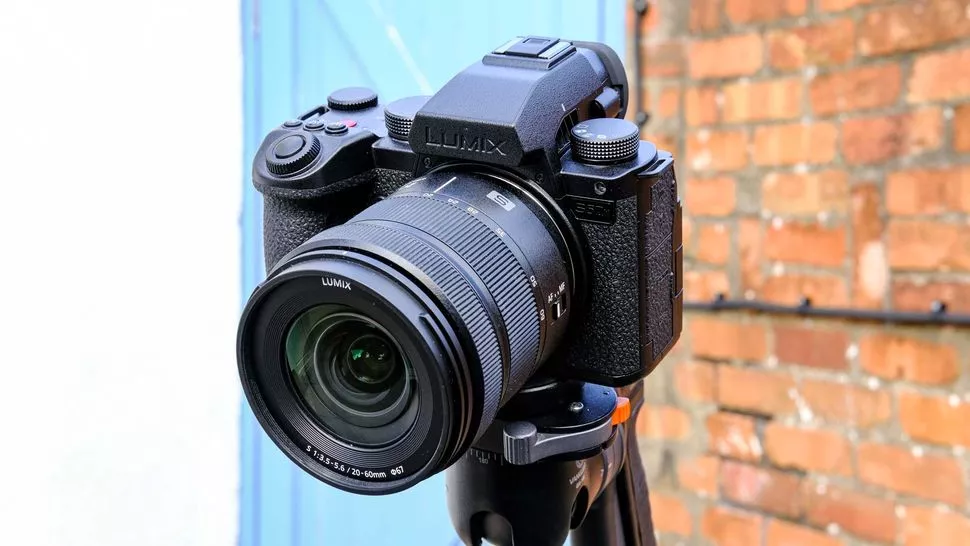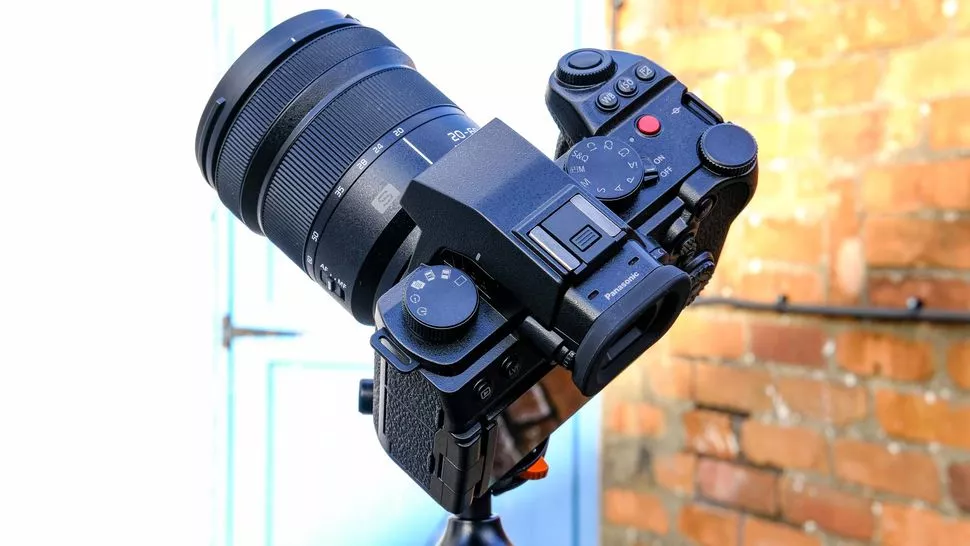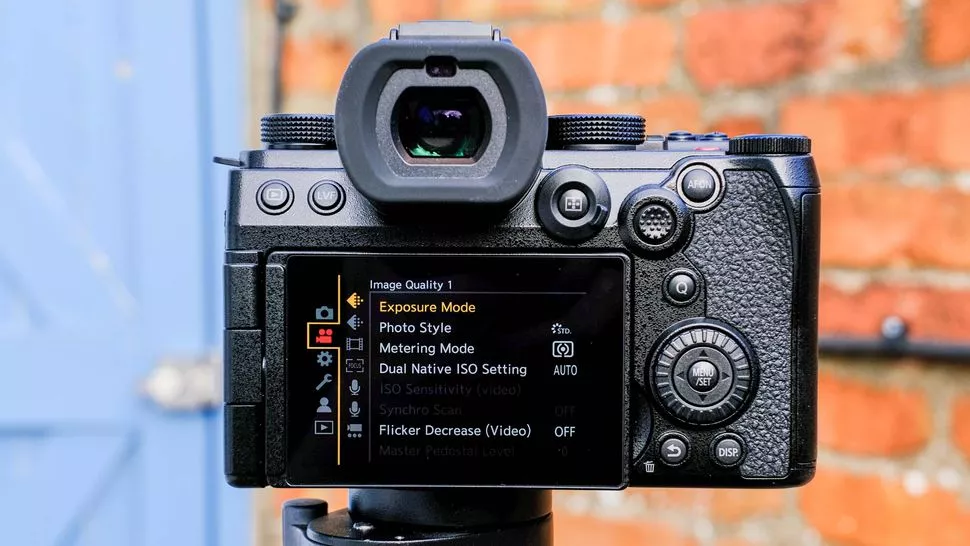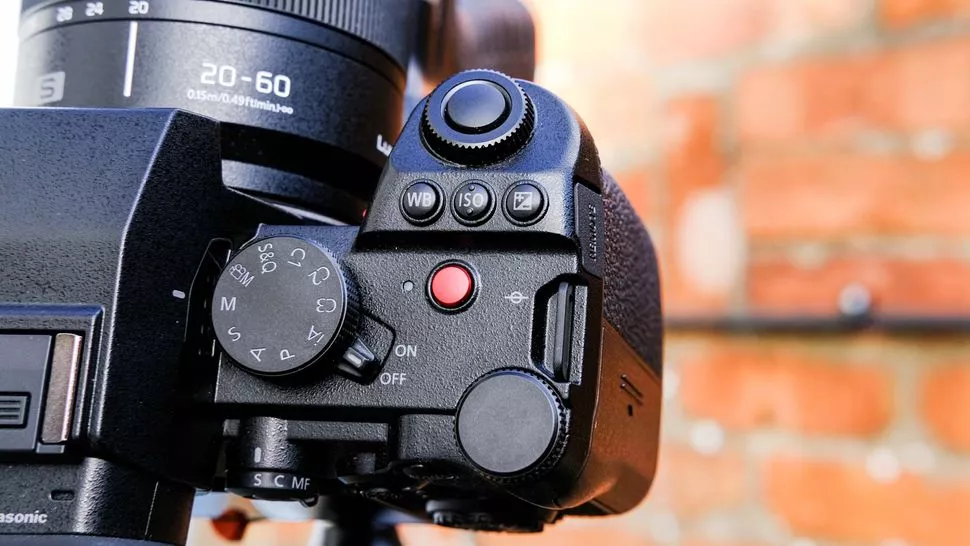The Panasonic LUMIX S5IIX is one of the successors to the original LUMIX S5, and it comes in two models: the base S5II and the S5IIX, with the latter offering additional video specs. Both models build upon the strengths and criticisms of the original LUMIX S5.

The original LUMIX S5 was highly regarded as one of the best mirrorless cameras, especially for its excellent video production capabilities. Both S5II models continue this legacy, featuring powerful specifications tailored to the video-oriented side of the mirrorless market. These cameras, especially the S5IIX, are geared toward filmmakers and serious videographers, rather than vloggers or social media creators, as evidenced by the range of resolutions and formats they offer.
One potential drawback of the original S5 was its autofocus system, which relied on contrast-only detection. While it performed well in real-world scenarios, Panasonic has equipped both new models with a hybrid-detection autofocus system, combining both phase and contrast detection for improved performance.
The LUMIX S5IIX is undoubtedly an excellent camera, living up to the reputation of its predecessor. However, it may not be the right choice for everyone, as it caters to a specific niche of videographers and filmmakers. To determine if it suits your needs, you can delve into a comprehensive LUMIX S5IIX review.
Panasonic Lumix S5IIX – A Look at the Specs

If you’re in the market for a powerful camera that boasts impressive specs, the Panasonic Lumix S5IIX deserves your attention. This camera comes with a range of features that will take your photography to the next level. Specs listed below:
- Sensor: Equipped with a 24.2MP CMOS Full Frame sensor.
- Image Stabilization: Enjoy 5-stop In-Body Image Stabilization (IBIS).
- Autofocus: Benefit from 779-point Hybrid AF for precise focus.
- Viewfinder: The OLED Electronic Viewfinder (EVF) with 3.68M dots provides a crystal-clear view.
- Display: The 3-inch Vari-Angle LCD touchscreen with 1.84M dots is versatile and user-friendly.
- ISO Range: Capture shots with an ISO range of ISO100 to 51,200 (expandable to ISO50 to 204,800).
- Max Video Resolution: Achieve stunning video quality with a max resolution of 6K at 30p.
- Ports: The camera features USB type-C, HDMI, a 3.5mm microphone jack, headphone jack, remote port, and a hot-shoe for accessories.
- Storage: It supports 2 x UHS-II memory cards.
- Wireless Connectivity: Stay connected with Wi-Fi operating at 5GHz and Bluetooth 5.0.
- Shutter Speed: The shutter speed can go as high as 1/8000.
- Shooting Speed: Enjoy 9 frames per second (fps) with mechanical shutter and an impressive 30 fps in electronic shutter mode.
- Battery Life (CIPA): The camera offers up to 370 shots per charge.
- Size/Weight (including battery and 1 card): Compact and lightweight, measuring 5.29 x 4.03 x 3.55 inches and weighing 1.64 lbs.
Panasonic Lumix S5IIX – A Camera Worth Its Price
The Panasonic Lumix S5IIX, released in June 2023, enters the market at a price point of $2,199 (or £2,299) for the body-only configuration. This reflects a modest increase of around $200 (or £200) compared to the base S5II. The camera was tested with the Lumix S 20-60mm F3.5-5.6 lens, available as part of a kit for $2,499 (or £2,499).
While experienced videographers may already have their lens preferences, newcomers to the Lumix S system might find the 20-60mm lens a suitable starting point. It impresses with sharpness and a versatile zoom range, making it particularly well-suited for video production. However, it’s important to note that its maximum aperture of F3.5-5.6 may impose limitations in low-light conditions, especially without artificial lighting. Therefore, it’s advisable to consider a faster lens for such scenarios.
In the realm of native L-mount lenses, Panasonic currently offers 14 options for their full-frame cameras. Some of these are fast and affordable prime lenses, but fast native zoom lenses come with a higher price tag, often exceeding $2,000 for an f/2.8 zoom lens from Panasonic. This might not be a concern for professionals or existing system users, but it could be a deterrent for aspiring amateur filmmakers or semi-professionals looking to switch to the Lumix S system and seeking a broader lens selection.
Fortunately, third-party manufacturer Sigma comes to the rescue with a variety of L-mount lenses, including their reliable lineup of affordable constant f/2.8 zoom lenses known for their exceptional build quality and image performance. This broader range of options adds versatility to the Lumix S5IIX, ensuring that users can find the perfect lens to match their needs and budget.
Panasonic Lumix S5IIX – A Handsome and Sturdy Design

The Panasonic Lumix S5IIX maintains a strikingly similar design to the base S5II, which itself shares its aesthetics with the original S5. This consistency in design, however, is far from a drawback, especially for those who appreciate a modern and sleek camera appearance.
The key distinguishing features of the S5IIX are its blacked-out Lumix and model logos, providing a stealthy and visually appealing appearance. This design element lends the camera an edgy and robust character.
In terms of dimensions, the S5IIX measures 5.29 x 4.03 x 3.55 inches and weighs 1.64 lbs. With a zoom lens attached, it may feel somewhat large and heavy, making it less suitable for extended periods of street photography while hanging around your neck. Nevertheless, it feels comfortable and manageable in hand, with a generous sculpted grip and a versatile vari-angle screen contributing to its user-friendly design.
The build quality of the S5IIX is outstanding, featuring a primarily metal body encased in grippy plastic. Both materials exude a premium and robust feel. Notably, the card compartment is protected by a spring-loaded plastic hatch, which provides a satisfying click when locked and unlocked. Most dials offer tactile and audible feedback when rotated, and the buttons deliver responsive haptic sensations.
ALSO READ: Glowforge Aura Laser Cutter Review – Affordable Precision Cutting for Beginners in 2023
While the overall build quality is commendable, there are minor shortcomings worth mentioning. The control dial encircling the shutter button is made of plastic, contrasting with the other metal dials and giving a slightly cheap appearance. Additionally, the shutter button itself lacks substantial resistance, although finding the half-press position is straightforward. These minor imperfections slightly mar an otherwise impeccable build.
The rear monitor, while not boasting the highest resolution at 1.84 million dots, excels in rendering fantastic colors. It offers a range of calibration controls, including adjustments for backlight, brightness, red/blue tint, saturation, and contrast. Such controls, not always found on non-video-focused cameras, provide extra flexibility for screen calibration, particularly when shooting in-camera graded video using a LUT.
At the top, a 3.68 million-dot viewfinder boasts a 120fps refresh rate, ensuring smooth panning and ample resolution for meticulous focus checks. Similar to the rear monitor, the viewfinder can be customized to meet specific preferences.
Connectivity options are noteworthy. The camera features a hot-shoe on top and includes ports for a microphone and headphones on one side. Additionally, a full HDMI port, an improvement over the micro-HDMI on the original S5, and a USB-C port are provided. These ports enable external recording to either a video recorder or an SSD. Nevertheless, they may obstruct the movement of the rear screen when plugged in, particularly the HDMI port, preventing upward tilting for overhead viewing. This limitation is a common challenge in many cameras, with no easy solution. However, relocating the HDMI port to the bottom of the panel could have allowed for a few more degrees of upward tilt.
Close to the shutter, a remote hookup port can be found, positioned above dual UHS-II card slots. While the absence of a CF-Express port may disappoint professional users who demand demanding resolutions and bitrates, it’s worth noting that SSD and HDMI recording options offer viable alternatives for their needs.
Panasonic LUMIX S5IIX – Controls and User-Friendly Interface

The Panasonic LUMIX S5IIX is well-equipped with physical controls, offering comprehensive access to essential photography shooting parameters. Key controls include two dials for adjusting aperture and shutter settings, an ISO button for quick sensitivity adjustments via either dial, and dedicated buttons for white balance and exposure compensation. These controls provide immediate access to the core exposure settings, ensuring that photographers have essential tools at their fingertips.
The camera’s focus control layout is equally intuitive. Focus modes can be conveniently selected using a dial located near the electronic viewfinder (EVF) housing. This dial is easily accessible by the thumb, whether you’re using the EVF or the rear display. In the center of the dial, you’ll find focus point selection, while the focus joystick is situated to the right. This well-thought-out design ensures that photographers can effortlessly navigate focus settings. Users will find the LUMIX S5IIX a joy to use right from the start, as there’s no steep learning curve. The layout minimizes the need for searching, as all essential controls are immediately evident and easily reachable during shooting. For additional settings, the Q menu and the primary menu system are readily available.
The camera’s menu system is thoughtfully designed, with a sensible layout that is clear and user-friendly. A noteworthy feature is that the menu remembers your previous location, allowing you to explore settings, observe their impact, and return quickly to the same menu page for further adjustments. This implementation of basic design principles enhances the user experience, making it easy to navigate the camera’s menu.
However, there is one peculiar issue with the LUMIX S5IIX—its responsiveness to certain inputs can be quite slow. Changing shooting parameters is generally smooth, but when you press the playback button, the camera often takes around 3 seconds to transition to playback mode. This delay can lead to confusion, as users might mistakenly believe that their input was not registered and press the button again, inadvertently returning to shooting mode. Additionally, the camera tends to have a startup time of over 5 seconds when powering on for the first time of the day. This delay can be disconcerting, with users potentially assuming the camera is dead and attempting to charge it, only for it to suddenly turn on with a full battery. This behavior is indeed unusual and may be an area for improvement.
Panasonic LUMIX S5IIX – Autofocus Performance and Detection Modes

The Panasonic LUMIX S5IIX and its sibling model, the S5II, introduce Panasonic’s new 779-point hybrid-detection autofocus (AF) system. This new system incorporates both phase detection and contrast detection, addressing previous criticism of the original S5’s contrast-only detection AF. In theory, this enhancement should improve the cameras’ ability to detect and track moving subjects. Anecdotal feedback from professionals who have extensively used the original S5 suggests that the camera’s autofocus worked well in practice, with some exceptions for situations where professionals used manual focus with cine lenses.
Panasonic recognized the importance of on-paper specifications in influencing first impressions, both from media and consumers. Therefore, the development of the LUMIX S5II and LUMIX S5IIX placed a priority on implementing the hybrid-detection AF.
ALSO READ: Sonos Move 2 Review – A Sonic Evolution and Smart Upgrade
In practical testing, the autofocus in the LUMIX S5IIX demonstrated good performance. The camera effectively detected and accurately tracked subjects such as greyhounds moving across the frame. In still photography, using human face and eye detection, the camera reliably identified faces and eyes in well-lit to moderately low-light conditions, although it faced some challenges in low-light environments. For video, the camera tracked subjects effectively during a test, with consistent performance. While there were a few instances of subjects momentarily going out of focus, this was attributed to the minimum focusing distance of the lens. Overall, the S5IIX delivered satisfactory autofocus performance.
The detection modes of the LUMIX AF system reveal that it is still in an early stage of development. Comparable cameras from other manufacturers in the same price range, such as the Canon EOS R6 Mark II, Sony A7 IV, Fujifilm X-T5, or X-S20, provide a wide range of detection modes, including animal eye detection and specific modes for subjects like birds, trains, cars, and planes. In contrast, the S5IIX offers only human eye/face detection and basic animal detection modes. While this limitation may not significantly impact professional video producers, it indicates that there is room for growth in terms of detection mode variety.
Panasonic LUMIX S5IIX – Sensors, Image Quality, and Performance
The Panasonic LUMIX S5IIX features a 24.2MP full-frame sensor. In still photography, this sensor delivers highly detailed images with ample resolution for moderate cropping, online display, or small-to-medium-sized prints.
The camera produces fantastic colors when using the Standard picture profile, creating deep, vivid, and natural color rendering without appearing artificial or oversaturated. The camera demonstrates a wide dynamic range, effectively capturing dark shadows and bright highlights in the same frame. This wide dynamic range results in images with minimal data lost to blown-out highlights, enhancing the camera’s capabilities.
Additionally, the camera offers various color profiles for photographers looking to shoot straight out of the camera. These profiles also serve as the LUT (Look-Up Table) bank for video work. For example, the Cinelike V2 profile produces desaturated and low-contrast images, creating a dreamy cinematic effect.
The LUMIX S5IIX performs impressively in high-speed photography. With two UHS-II V60 cards, the camera can shoot RAW and Fine JPEG images continuously at high speeds for over 200 shots. This equates to nearly 7 seconds of shooting at 30 frames per second (fps) using the electronic shutter or over 22 seconds at 9 fps with the mechanical shutter. Even after capturing 200 shots, the camera’s buffers were not completely filled, allowing for the continuation of single shots while the camera wrote the images to the memory cards. This feature is valuable for capturing important moments at events such as weddings.
Both the LUMIX S5II and LUMIX S5IIX models are equipped with 5-stop in-body image stabilization (IBIS). This stabilization system enables sharp handheld shots with slower shutter speeds, especially helpful when using lenses with narrower maximum apertures like the 20-60mm kit lens.
The camera also excels in high ISO performance, thanks to its full-frame sensor and moderate pixel count. At ISO 100, images exhibit ample detail, and fine elements, such as individual paint strokes and facial features, are well defined. Even at ISO 25,600, the camera performs admirably. While there is noticeable noise in the background, it doesn’t detract significantly from the image quality. The gold paint and facial features remain relatively well-preserved, and the image isn’t overly smoothed by aggressive noise reduction.
However, there seems to be an issue with variations in the camera’s internal light metering. The images demonstrate inconsistencies between shots, particularly in terms of exposure and brightness, even when using the same settings. This inconsistency could pose challenges for photographers who require consistency between shots.
Panasonic LUMIX S5IIX – Video Capabilities and Performance
The Panasonic LUMIX S5IIX provides a wide range of recording options and resolutions, offering filmmakers significant flexibility to adapt footage to their specific needs, workflows, and post-production requirements.
Internally, the camera supports compressed full-frame recording in 6K at 30fps with Cinema 4K at 60fps available at a crop factor. These recordings are in MOV format with 4:2:2 10-bit ALL-Intra or Long GOP compression up to Cinema 4K resolution. For lower compression and higher data capture, you can record 5.8K at 30fps or Cinema 4K at 60fps in Apple ProRES externally to an SSD, offering 12-bit 4:2:2 recordings at bitrates of up to 1.9Gbps. The camera also supports RAW output to external recording devices through HDMI, with options for ProRES RAW or Blackmagic RAW depending on the external recorder used. Filmmakers can leverage the VLog profile, which provides 14 stops of dynamic range for enhanced grading and exposure flexibility during post-production. Additionally, the camera offers a selection of LUTs for in-camera color grading.
For slow-motion footage, the camera supports 120fps recording in Full HD. However, it’s worth noting that competitors like the Sony a6700 can record 120fps in 4K, which may be seen as an advantage for those who require 4K slow-motion capability. The camera also features an S&Q (Slow and Quick) mode for recording at 60fps and achieving a 30fps slow-motion effect directly from the camera.
In comparison, the standard LUMIX S5II does not offer ProRES or RAW recording out of the box. However, a paid firmware upgrade is available for RAW output. It also lacks the ability to record to SSD via USB and does not support live streaming through Wi-Fi, Ethernet, or USB-C, features that are available on the S5IIX model.
The in-body image stabilization (IBIS) system, offering 5 stops (increased to 6.5 stops with a Panasonic OIS lens), provides significant stability benefits for video recording. The camera demonstrates noticeably smoother video when hand-held, especially during panning. While it cannot fully replace a gimbal, it substantially improves video stability.
The LUMIX S5IIX features a built-in fan that enables unlimited recording at 4K/60p and 30 minutes of recording at 6K/30p. Overheating issues are not encountered during testing, even when recording at 6K/30p for up to the 30-minute limit, followed by 4K/60p until the battery is depleted. The fan noise is not noticeably disruptive and is unlikely to interfere with microphones mounted on or near the camera.
Panasonic LUMIX S5IIX – Battery Life for Video
The Panasonic LUMIX S5IIX is designed with video-centric features, so battery life for video recording is an important consideration for this camera. According to Panasonic, the S5IIX’s battery is expected to last for approximately 90 minutes of continuous recording at 4K/60p with an APS-C crop.
In testing, it was found that the camera’s battery life closely matched Panasonic’s claim, and in some cases, it even exceeded the stated duration. For instance, when shooting at 6K/30p in full-frame mode for 30 minutes and then switching to 4K/60p in APS-C crop mode for 70 minutes, the camera’s battery allowed for a total shooting time of 100 minutes.
However, despite this performance being slightly better than the official estimate, the camera’s battery life is still considered substandard for a camera in this price range. For comparison, the similarly priced Sony A7IV is equipped with a battery rated for 580 shots, and even the much more affordable Canon EOS R50 has a battery rated for 440 shots. This discrepancy highlights the importance of considering battery life, especially for videographers and filmmakers who may require extended recording times.
Panasonic LUMIX S5IIX Pros and Cons
| No. | Pros. | Cons. |
| 1. | Professional Video Specs: The camera offers impressive video specifications suitable for professional content creators and filmmakers. | Limited Autofocus Features: The autofocus system, while improved, may still lack certain advanced features. |
| 2. | Fantastic Build Quality: The LUMIX S5IIX boasts a high-quality build with a premium feel. | No CFexpress Slot: The absence of a CFexpress slot might disappoint some users, as it offers fast data transfer speeds and storage capabilities. |
| 3. | Improved AF System: The autofocus system has seen significant improvements, enhancing its performance. | Inconsistent Light Metering: The camera’s light metering performance is inconsistent, potentially affecting exposure accuracy in various shooting conditions. |
| 4. | Great Controls: The camera features intuitive and easy-to-use controls that facilitate efficient operation. | |
| 5. | Heat Management: It effectively manages heat, preventing overheating issues during extended use. | |
| 6. | High Value for the Price: The camera delivers excellent value for the money, providing professional-grade performance. |
Panasonic LUMIX S5IIX – The Verdict
The Panasonic LUMIX S5IIX is an impressive camera with very few shortcomings. Designed for specific purposes, it excels in its intended use and caters to its target audience effectively.
In terms of still photography, the LUMIX S5IIX is indeed capable but not the primary focus of this camera. Enthusiast photographers looking for a dedicated photography-oriented camera may find better options in the market, such as the more affordable Fujifilm X-T5. Likewise, professional or semi-professional photographers who occasionally engage in videography might be better served by the Canon EOS R6 Mark II, which offers robust 4K video capabilities and improved autofocus systems beneficial to photographers.
However, if you’re a serious video creator or aspiring filmmaker seeking to produce professional-quality online content or films, the LUMIX S5IIX represents an exceptional value for the money. It boasts an impressive build, handles well, and delivers beautiful photos and video. Furthermore, it offers a wide array of recording options that grant users remarkable flexibility and top-notch performance.
While the camera’s autofocus system may not excel in tracking fast-moving subjects like trains, such limitations are unlikely to pose significant issues in real-world filmmaking scenarios. In the context of video production and filmmaking, the LUMIX S5IIX proves to be a compelling choice.
The LUMIX S lens range may present a slight limitation, and the multi-metering performance of the camera is inconsistent. However, aside from these aspects, the camera is likely to satisfy the demands of filmmakers, leaving them with few reasons for complaint. If you fall into this category of users, the LUMIX S5IIX offers a professional-grade package that is sure to impress.









